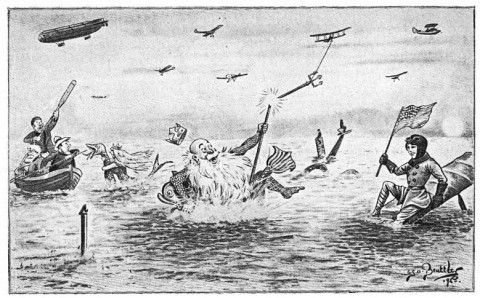Father Neptune and the American girl
This whimsical illustration, showing Father Neptune beset by all manner of aerial pests, appeared in Murray F. Sueter’s Airmen or Noahs: Fair Play for our Airmen; The Great ‘Neon’ Air Myth Exposed (London: Isaac Pitman & Sons, 1928), opposite 410. Sueter had been a technically-minded naval officer (torpedoes, airships, armoured cars, tanks and of course […]




